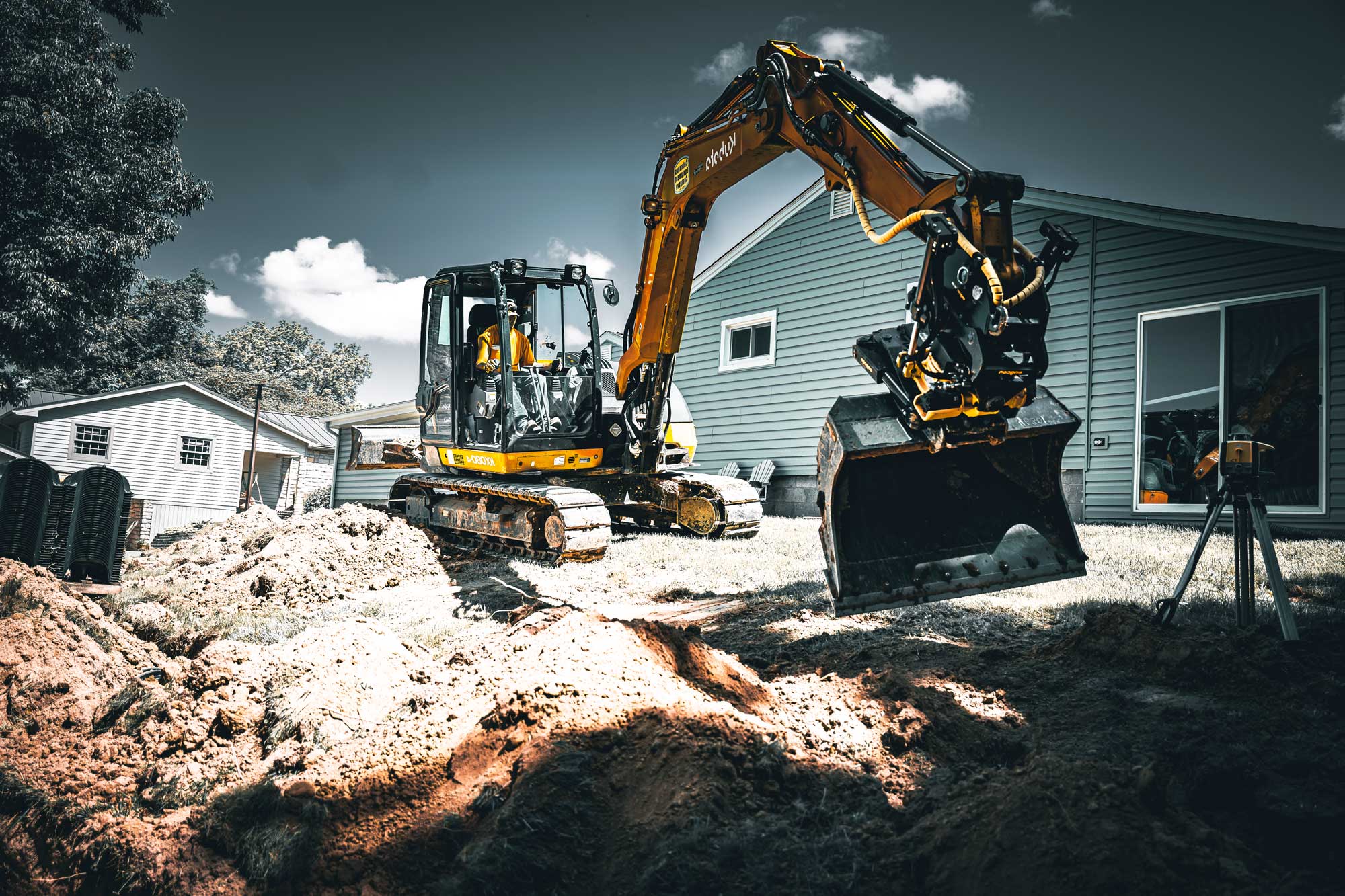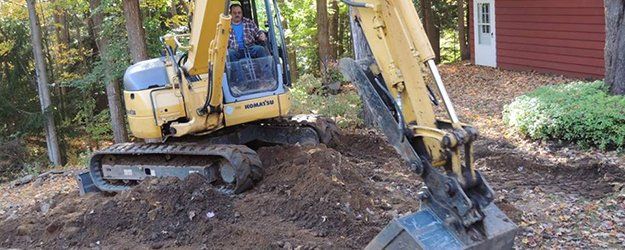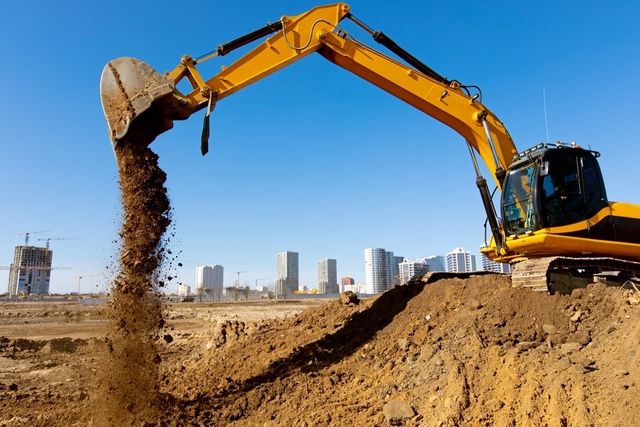Lancaster Excavation - Specialist Excavation Providers in Lancaster, OH
Lancaster Excavation - Specialist Excavation Providers in Lancaster, OH
Blog Article
Extensive Expedition: The Scientific Research Behind Superior Excavation Practices
The world of excavation techniques is a domain name where science links with craftsmanship to uncover the mysteries concealed underneath the earth's surface area. From ancient hand devices to modern-day hydraulic excavators, the advancement of excavation strategies has actually been a testament to human ingenuity and technical developments. Nonetheless, what truly establishes superior excavation practices apart is a deep understanding of geological concepts, paired with the use of sophisticated devices and techniques. By exploring the science behind these methods, we can uncover the keys that lie below our feet and value the accuracy and experience that go into every dig.
Development of Excavation Methods
Throughout history, the development of excavation techniques has played an essential duty ahead of time building practices and archaeological explorations. From the simple devices used by our forefathers to the advanced equipment utilized in modern times, the development of excavation approaches has significantly transformed exactly how we come close to different projects.
In old times, manual work with fundamental devices such as wheelbarrows, pickaxes, and shovels was the key method of excavation. This labor-intensive procedure restricted the deepness and range of excavations, frequently resulting in slow progression and restricted access to certain sites. Nonetheless, as human beings advanced, so did the strategies and devices made use of for excavation.
The Industrial Transformation noted a transforming factor in excavation techniques with the introduction of steam-powered equipment. This innovation reinvented the area, allowing for faster and much more considerable excavations. In contemporary times, modern technology plays a crucial function in excavation, with developments like general practitioner systems, drones, and 3D scanning boosting precision and performance in the field. The evolution of excavation methods remains to shape the method we build, explore, and comprehend the globe around us.
Duty of Innovation in Excavation

The integration of advanced innovation has actually basically transformed the field of excavation, boosting precision and effectiveness to unprecedented levels. One of the key technological advancements that has actually substantially influenced excavation methods is the application of GPS systems. These systems allow for precise mapping of excavation sites, enabling drivers to accurately find below ground energies and frameworks. Additionally, using telematics in excavation devices has enabled real-time tracking of device efficiency, causing positive maintenance and increased operational productivity.
Moreover, the arrival of 3D modeling and simulation software program has streamlined the preparation procedure for excavation jobs. Designers and drivers can now picture the whole excavation procedure before beginning, enhancing and recognizing possible obstacles workflow. In combination with this, the execution of drones in excavation activities has helped with airborne studies, volumetric measurements, and website inspections with unmatched rate and precision.
Geological Concepts in Excavation
An understanding of geological principles is necessary for making sure the architectural stability and security of excavation websites. Geological elements play a vital duty in determining the usefulness and security of excavation jobs (excavating ohio). One key geological concept to consider is the kind of soil or rock existing at the website. Various dirt kinds, such as gravel, sand, or clay, have varying levels of security and require various excavation strategies. As an example, natural soils like clay might call for added support to avoid collapses, while sandy soils may be vulnerable to erosion during excavation.
In addition, the geological structure of the location, consisting of faults, cracks, and rock formations, should be meticulously analyzed to determine potential threats and difficulties. Excavating near mistake lines or unstable rock formations can bring about instability and possible hazards. By performing comprehensive geological surveys and analysis, engineers and excavators can establish strategies to alleviate risks and make certain the effective completion of excavation projects. Inevitably, integrating geological principles into excavation practices is vital for achieving secure, reliable, and sustainable outcomes.

Latest Tools for Excavation
In the world of excavation practices, modern advancements in devices have revolutionized the performance and precision of excavation processes. These drones can offer comprehensive aerial studies of excavation websites, providing real-time information on topography and prospective risks.
One more cutting-edge tool getting popularity is the implementation of 3D printing innovation for developing personalized excavation devices. This enables the production of specialized devices that are tailored to the details needs of a task, enhancing performance and decreasing downtime.
Moreover, innovations in products scientific research have actually resulted in the development of more powerful and extra long lasting excavation devices. lancaster excavation. Tungsten carbide-tipped excavator attachments, for instance, deal premium efficiency in tough ground problems, boosting efficiency on-site
Scientific research's Influence on Excavation Practices

Furthermore, scientific research study on soil auto mechanics and geotechnical design has actually offered beneficial insights right into soil habits, permitting excavation specialists to make educated choices concerning excavation approaches and soil stabilization strategies. Generally, scientific research proceeds to drive advancement and renovation in excavation methods, making excavation projects more efficient, affordable, and sustainable.

Conclusion
To conclude, the evolution of excavation methods has been significantly affected click resources by developments in modern technology and a much deeper understanding of geological concepts. The most recent devices and tools made use of in excavation have improved performance and precision in the area. The application of scientific expertise has dramatically improved excavation methods, resulting in much more effective and sustainable approaches for excavating numerous sorts of products.
In the world of excavation practices, modern developments in devices have actually reinvented the effectiveness and accuracy of excavation processes. By leveraging clinical principles, the excavation market has actually been able to substantially enhance efficiency, accuracy, and security in excavation processes. GPR allows excavation groups to non-invasively check and map subsurface structures, utilities, and prospective threats, enabling them to intend excavation tasks with better precision and decreased danger of accidents.
Furthermore, clinical research study on Check This Out dirt auto mechanics and geotechnical design has given useful insights right into soil actions, allowing excavation specialists to make enlightened choices concerning excavation approaches and this link dirt stabilization methods. Overall, science continues to drive innovation and improvement in excavation techniques, making excavation projects more efficient, affordable, and lasting.
Report this page